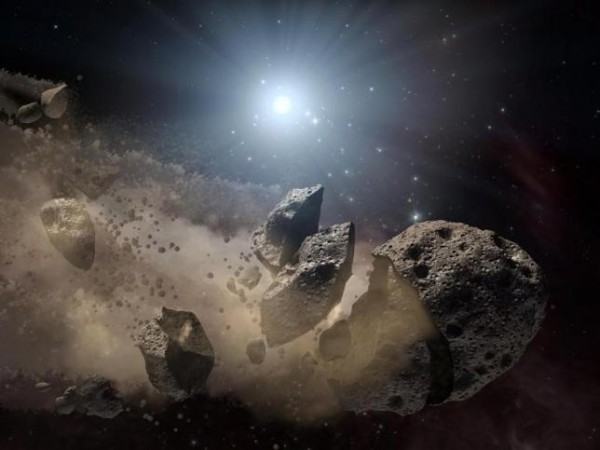By Lynn Palec, | March 09, 2016

Earth was once again spared from an imminent disaster after the 100-foot wide Asteroid 2013 TX68 safely passed the planet.
Earth was once again spared from an imminent disaster after the 100-foot wide Asteroid 2013 TX68 safely passed the planet. Scientists claim that Asteroid 2013 TX68 made its closest approach to Earth at about three million miles on 7PM ET of March 7.
The National Aeronautics and Space Administration originally predicted that the asteroid will by fly by Earth on March 5. However, additional data acquired by NASA's Center for Near-Earth Object Studies (CNEOS) Propulsion Laboratory allowed to create a far more accurate prediction and said that it would pass the planet instead on March 8.
Like Us on Facebook
Since February, NASA was able to determine that Asteroid 2013 TX68 will make a close pass at Earth. According to Wired, the space agency predicted that the space object will be around three million miles about when it flew past Earth. However, there is a slim possibility that the asteroids trajectory could change and come as close as 15,000 to the Earth.
The main reason for the vast range in terms of predicting the asteroids trajectory stem from NASA's lack of data since the agency was only able to track the asteroid after it was discovered on Oct. 6, 2013.
An a statement acquired by NBC News, CNEOS manager Paul Chodas made an assurance saying, "There is no concern whatsoever regarding this asteroid - unless you were interested in seeing it with a telescope."
About two years ago, Asteroid 2013 TX68 made a pass at Earth. However, back then it was at a very safe distance of 1.3 million miles. NASA said in a statement, "If an asteroid the size of 2013 TX68 were to enter Earth's atmosphere, it would likely produce an air burst with about twice the energy of the Chelyabinsk event."
In 2013, an asteroid was able to penetrate the Earth's atmosphere and broke up over Chelyabinsk, Russia. Despite the fact that the asteroid did not physical make an impact on the Earth's surface, the immense energy burst damaged several buildings and injured more than 1,000 people.
NASA scientists confirmed that Asteroid 2013 TX68 is expected to fly by Earth three more times; on Sept. 2, 2017, in 2046 and in 2097. NASA added that Asteroid 2013 TX68 will not impact the planet over the next century.
-
Use of Coronavirus Pandemic Drones Raises Privacy Concerns: Drones Spread Fear, Local Officials Say

-
Coronavirus Hampers The Delivery Of Lockheed Martin F-35 Stealth Fighters For 2020

-
Instagram Speeds Up Plans to Add Account Memorialization Feature Due to COVID-19 Deaths

-
NASA: Perseverance Plans to Bring 'Mars Rock' to Earth in 2031

-
600 Dead And 3,000 In The Hospital as Iranians Believed Drinking High-Concentrations of Alcohol Can Cure The Coronavirus

-
600 Dead And 3,000 In The Hospital as Iranians Believed Drinking High-Concentrations of Alcohol Can Cure The Coronavirus

-
COVID-19: Doctors, Nurses Use Virtual Reality to Learn New Skills in Treating Coronavirus Patients












